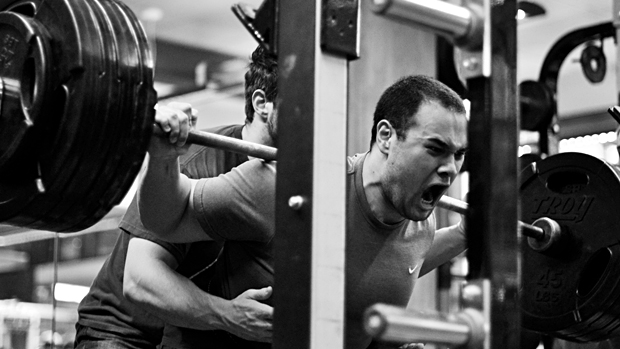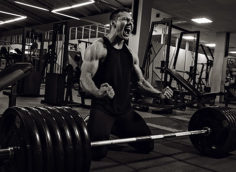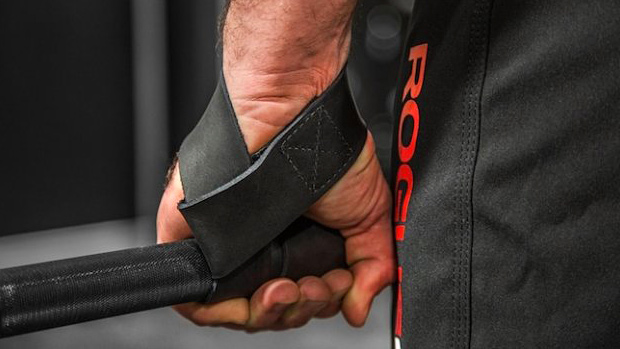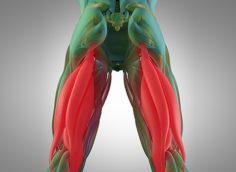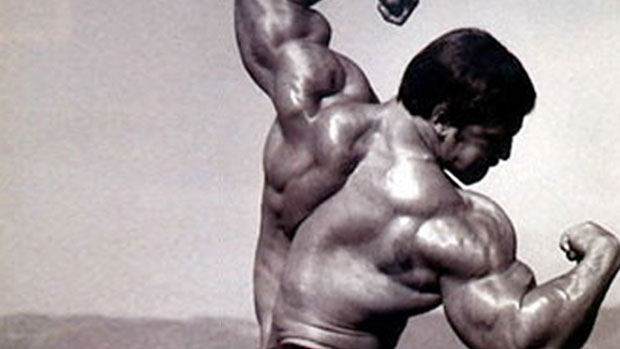"Deadlifting and Squatting Will Make You Blocky, Bro!"
For decades, bodybuilders feared training like powerlifters. They believed the powerlifting style of training would ruin their physiques.
"It'll make your waist thick!"
"You'll become blocky!"
Most of these statements weren't grounded in any sort of facts or reality though. And as things tend to do in the fitness industry, the tide has shifted dramatically.
Over the past several years, the line between bodybuilding and powerlifting has blurred, particularly in the natural competitive arena.
Increasingly, bodybuilders are taking to powerlifting to test their strength and build their physiques. The popularity of the crossover has increased as more competitors are showing that it's possible to have success in both arenas.
Many are doing both, and doing both well.

When powerlifting style training first started to find its way into bodybuilding routines it was a good thing. Bodybuilders benefited greatly from incorporating powerlifting into their programs.
However, as is the nature of most bodybuilders, many have taken the approach of "if some is good, then more is better." It has just gone too far.
There's nothing wrong with powerlifting for a bodybuilder, but there are drawbacks that come from an overreliance on powerlifting training when it comes to goals of the physique athlete.
While it probably won't be a popular statement, it needs to be said:
Powerlifting is beginning to become a detriment to many bodybuilders.
There's now a warped view of what effective bodybuilding training entails, and many are quick to cast ridicule upon those that hold more traditional "bodybuilding style" training approaches.
Someone trying to tout the benefits of high-rep training or direct arm work is quickly cast as a "bro," labeled uneducated, and usually trolled mercilessly.
It's now a common belief that squatting, bench pressing, and deadlifting in the 1-5 rep range is largely all that's needed to build a perfect bodybuilding physique.
What's interesting about this is that many of the people taking this approach are in the scientific-minded bodybuilding crowd. The very techniques they're insulting are some of the most scientifically proven methods for stimulating hypertrophy.
It's time to remind people that there's no shame in actually training like a bodybuilder in order to look like a bodybuilder. But let's begin by stating the positives.
The principles brought to light as a result of powerlifting among bodybuilders have improved training dramatically. Let's not ignore the clear benefits and remember that some powerlifting is a good thing.
1 Lower Body Muscularity
For a long time in bodybuilding history, there were entire competitions where every competitor would have phenomenal pecs, delts, and arms, but possess relatively puny lower bodies. The powerlifting movement has changed this dramatically.
No longer is leg training an afterthought; it's now the main event. Now when scanning the line-up at most bodybuilding shows, you'll see excellent leg development. Hip flexor muscles, the gluteal muscles, and of course, the hamstrings and quads now stand proud on stage.
This improvement is no doubt from the increased amount of squatting and deadlifting that competitors are engaging in. This is a great thing!

There are few things in this world that are sadder than seeing a muscular upper body fit for a Greek god perched atop a pair of legs fit for a flamingo.
2 Increased Mechanical Tension
Powerlifters have one goal in mind – get stronger. This is also a goal for bodybuilders; however, it has never been a primary goal for most.
Many bodybuilders just focus on chasing the pump, feeling the burn, and other clichés of the like, whereas powerlifters plan for progressive load increases. Powerlifting programs are designed to add weight to the bar and increase the load over time. Bodybuilders have been wise to follow their lead.
Muscular growth is a complex process affected by many factors – too many to cover here. However, in Brad Schoenfeld's work on the mechanisms of muscle hypertrophy, he covers mechanical tension as one of the primary mechanisms through which muscle hypertrophy occurs.
Essentially, mechanical tension produced through force production and stretch disturbs the integrity of muscle tissue causing molecular and cellular responses in muscle fibers and satellite cells.
This is an example of progressive overload. Progressive overload says that you must lift heavier weight for more reps over time if you want to keep growing. Research has long suggested that increased tension development is a critical factor in initiating compensatory growth.
Put simply, lifting heavier weight over time will result in bigger muscles. Powerlifting has brought this goal to the forefront of training for many bodybuilders.
Now that we've covered the benefits of powerlifting for the physique athlete, let's look at why bodybuilders relying too heavily on powerlifting are missing out.
Higher reps and isolation movements may not be popular but they work. Here's why.
Muscle hypertrophy is an adaptation that occurs due to stimulus. If no stimulus is provided then no adaptation will occur.
For muscles to grow over the course of time, you have to force your muscles to do more work over time. The ultimate stimulus for hypertrophy is volume.
Some claim that volume is the primary driver of muscle hypertrophy because of exercise-induced endocrine responses with hormones such as testosterone, growth hormone, and IGF-1 increasing acutely due to training.
While anabolic hormones do rise acutely in response to training, this isn't what's driving the additional growth. There does, however, appear to be some evidence that this process could be intrinsic and mediated by the activation of signaling proteins.
Whatever the exact mechanism may be, one thing is clear: studies have shown that heavy weight will not beat light weight in terms of hypertrophy if the volume isn't equal.
"Can't I just use heavy loads for more sets to equal the volume?"
Valid question. A recent study compared bodybuilding style training with powerlifting style training in regards to strength and hypertrophy. One group performed 7x3, the other performed 3x10 with volume matched in both groups.
Strength increased more in the 7x3 group, which isn't surprising considering they were working closer to their max. However, hypertrophy was the same in both groups.
Many were quick to jump on this as proof that heavy, powerlifting style training could indeed be used to maximize hypertrophy. Well, yes and no.
There are a few things that a lot of people missed with this study. The group performing 7x3 reported feeling far worse than the group performing 3x10.
Also, the 3x10 group's training only lasted 17 minutes while the 7x3 group's training lasting 70 minutes. This is important to note.
So now that the study is over, which group do you suppose will have an easier time increasing volume? The group that feels rundown, already working near max loads, and spending more time in the gym?
Or the group that feels great, isn't working near max loads, and is only spending 17 minutes in the gym?
The 3x10 group could literally double their workload and still be training less than half of the time of the 7x3 group. Moderate and high rep training is a far more efficient method of increasing volume over the course of a training career.
As mentioned, the improvement in the lower body development of many bodybuilders is a great thing. However, the imbalance issues that used to plague bodybuilding are now occurring in reverse.
An increasing number of competitors have extremely muscular legs but upper bodies that clearly don't match.
Now, muscular symmetry is going to be largely determined by genetic factors. However, the assumption that "squats, bench presses, and deadlifts are all you need" has prevented many competitors from being able to close the gap on any muscular imbalances they may have.
If someone possesses genetics that predisposes their upper body muscularity to be greater than their lower, then heavy powerlifting style training is likely going to treat them well.
However, for someone with genetics that predisposes them to less muscular biceps, triceps, or delts, powerlifting isn't going to be kind to them. If you need bigger biceps then you have to curl... and curl a lot!
Going back to volume, if focusing primarily on the big three lifts and little else, then the amount of volume received by the lower body over the course of a training career will be disproportionate compared to the upper body, particularly the biceps and triceps.
Bodybuilders must train for what their bodies require. Powerlifters must train to perform three movements.
Bodybuilders are not required to perform any particular exercise. In fact, to fully maximize hypertrophy in your weaker areas you're better off using a wide variety of exercises.
The truth is, while they're great exercises, you could still build an amazing physique even if you never squatted, bench pressed, or deadlifted in your entire life.
Cellular swelling has caught a lot of attention in the past few years with the increased popularity of BFR (blood flow restriction) training. This is for good reason.
Cellular swelling has the potential to be a powerful trigger for muscle growth. It's thought that cellular swelling acts as a proliferative anabolic signal, not only increasing signals to "build" but also to signal reductions in "break down."
Cellular swelling can trigger protein and glycogen synthesis while simultaneously reducing proteolysis (protein breakdown) and glycogenolysis (glycogen breakdown). Beyond that, cellular swelling can trigger a slew of metabolic changes.
Higher rep training isn't very popular as of late but it seems as long as you're wearing cuffs and restricting blood flow while doing it, then it's deemed okay.
Since this article is already filled with unpopular statements, I might as well add that I'm not entirely convinced that the blood flow restriction is the cause of the increased hypertrophy in many of the studies.
In many of the BFR studies, there's usually a comparison between a high rep, blood flow restricted group and a low to moderate rep, non-blood flow restricted group, with the higher rep group performing a greater volume of work.
This begs the question, is the blood flow causing the growth, or is it the high reps?
A study conducted in 2014 investigated exactly that! The researchers compared equal repetition groups with the only difference being that one is blood flow restricted and the other is not
That study showed no difference in growth between the two groups!
While there's more research that needs to be done the subject, I'm inclined to believe that what we're really after here is high reps and, once again, volume.
Even high rep sets performed with loads as low as 50% 1RM when not blood flow restricted can induce significant metabolic stress, blood flow, and therefore muscle growth.

- Bodybuilders should train with a variety of rep ranges and exercises if they want to truly maximize hypertrophy. Different rep ranges tax the neuromuscular system differently and call upon different energy systems, so it makes sense to train in varying ranges to maximize size gains. However, due to the ability to increase and recover from more volume, it might be prudent to do a higher degree of high-rep work if you're a physique athlete.
- Include more accessory work for the areas where it's needed. It's nice to think that heavy squats and benches will cure your small arm woes, but they won't. Curls, lateral raises, and triceps extensions are valuable excises for bodybuilders and are by no means "unnecessary."
- Squats, bench presses, and deadlifts are excellent exercises for physique athletes. It's a good idea to include them into your program using a variety of rep ranges, but they're not the end all be all.
- Physique athletes need to program for their specific needs. Context within a training program is the great decider when it comes to whether or not something is beneficial or necessary. Goals, strengths and weaknesses, individual mechanics, and recovery ability need to be strongly considered.
- Choose a primary and secondary goal. For powerlifting bodybuilders, your primary sport is the area where you'll maximize progress. Your secondary is the sport where you can still progress at a good rate, but likely not maximize your potential.
- While high rep training and traditional bodybuilding techniques may not be popular at the moment, they are destined to make a comeback because of one simple reason: they work.
- Tiogo.M, Boutellier. U., New fundamental resistance determinants of molecular and cellular muscle adaptations. Eur J Appl Phsiol 97: 643-663, 2006
- Goldberg, A., et al. Mechanism of work induced hypertrophy of skeletal muscle. Medicine and Science in Sports, Vol 7, No. 3. pp. 185-198, 1975
- Kraemer, WJ., Endocrine responses to resistance exercise. Med Sci Sports Exerc. 1988 Oct;20(5 Suppl):S152-7
- West, DW., et al. Resistance exercise-induced increases in putative anabolic hormones do not enhance muscle protein synthesis or intracellular signaling in young men. J Physiol. 2009 Nov 1
- West DW., et al. Human exercise-mediated skeletal muscle hypertrophy is an intrinsic process. Int J Biochem Cell Biol. 2010 Sep;42(9):1371-5
- Baar, K., Esser, K., Phosphorylation of p70S6k correlates with increased skeletal muscle mass following resistance exercise. American Journal of Physiology - Cell Physiology Published 1 January 1999 Vol. 276 no. 1
- Burd, NA., et al. Resistance exercise volume affects myofibrillar protein synthesis and anabolic signalling molecule phosphorylation in young men. J Physiol. 2010 Aug 15;588(Pt 16):3119-30
- Burd, NA., et al. Low-load high volume resistance exercise stimulates muscle protein synthesis more than high-load low volume resistance exercise in young men. Public Library of Science 5(8): e12033, 2010.
- Schoenfeld B. J., et al. (2014) Effects of different volume-equated resistance training loading strategies on muscular adaptations in well trained men. J Strength Cond Res. IN PRESS
- Antonio, J., Nonuniform Response of Skeletal Muscle to Heavy Resistance Training: Can Bodybuilders Induce Regional Muscle Hypertrophy? The Journal of Strength and Conditioning Research (Impact Factor: 1.86). 01/2000; 14(1)
- Haussinger, D., The role of cellular hydration in the role of cell function. Biochem. J. (1996) 313, 697-710
- Fitschen PJ., et al. Perceptual effects and efficacy of intermittent or continuous blood flow restriction resistance training.Clin Physiol Funct Imaging. 2014 Sep;34(5):356-63
- Schoenfeld BJ., Is there a minimum intensity threshold for resistance training-induced hypertrophic adaptation? Sports Med. 2013 Dec;43(12)

